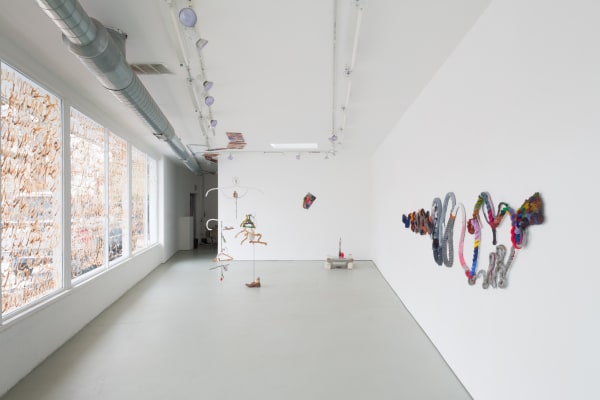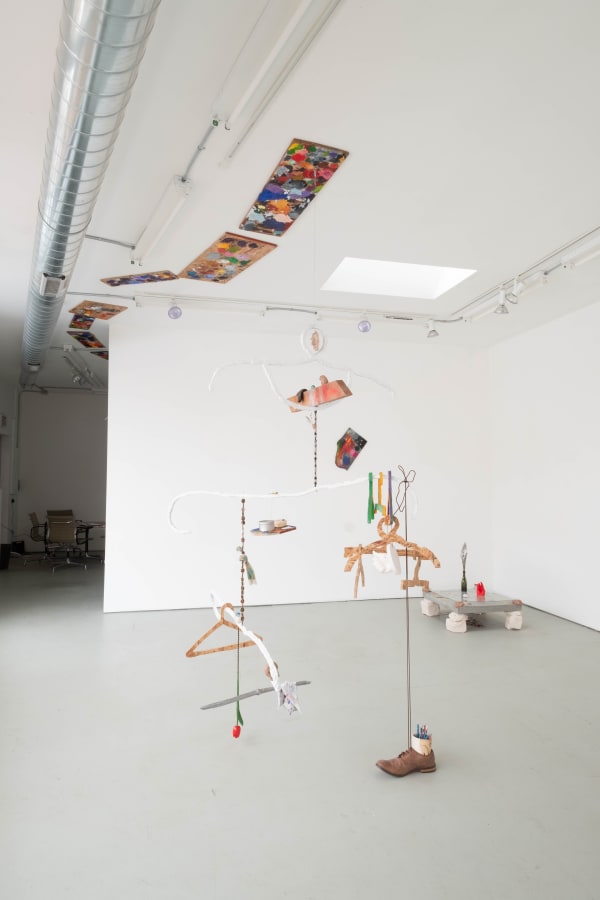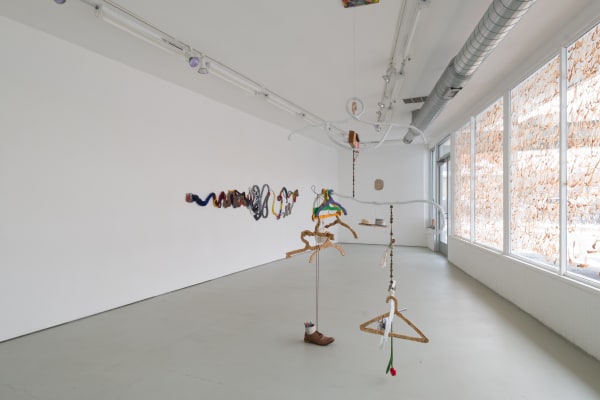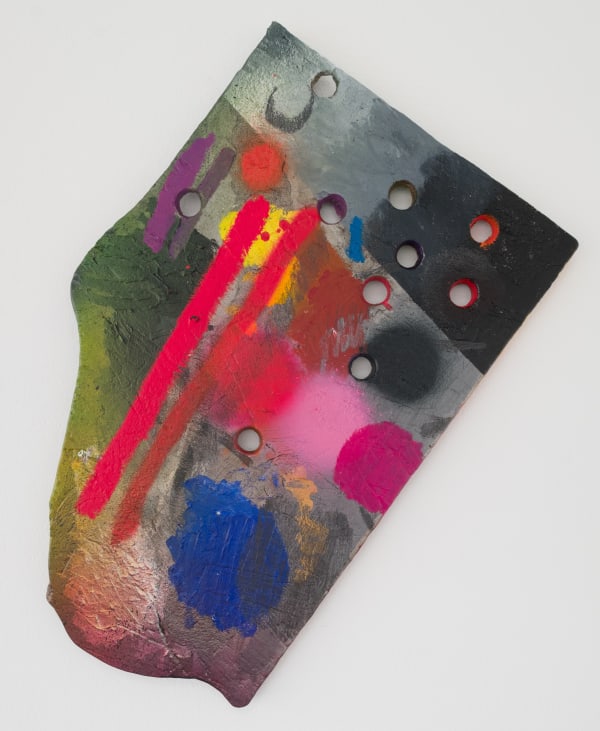Katy Cowan is currently the subject of two-person exhibition Left, Right, Left, Left at The Green Gallery (Milwaukee, WI), alongside Scott Cowan.
Press Release
January 3, 2020
"We (Katy and Scott) enjoyed making this exhibition. We think there are many ways that the work can be looked at, and we doubt that there are any single or systematic tendencies holding all the pieces together (though, if you find any, let us know!). While putting the show together, we enjoyed encountering all of the gaps and false starts, and stumbling into the undoings, that occur in the face of projects and of projections on projects. But that’s not to say there are no discernable trajectories here. There are at least a few (which you can take or leave as you please)…
One of them is the pull between movement and shadow. – It might sound simple, but light itself contains the idea of motion. Light has a speed. Its speed is constant and calculable; it is speed that is used to measure the immensity of space that we can know but will never cross. As movement, light is abstract and always outstrips us. There is the joke: “So what is the speed of dark?” But there is more than just irony here. Shadows do seem to involve a difference in speed. There’s is a movement we familiarize ourselves with—a shade is presupposed in all the light we come into real contact with. So it is, too, with movement and stasis. The static does not stand apart from the traversal of space. Stillness is, in some imaginable sense (or so we think), simply the coming-to-itself of motion. What stays still does so only as a presupposition of how it is that movement makes it way through whatever it is that movement makes it way through. We’ve tried to look at mobiles in this way, and the same goes for how we’ve looked at, e.g., the darting of cast aluminum on a wall, scrawls of clay on windows, and layers of objects resting within, upon, and above a cement surface.
Another way we think the works make sense is through ideas of formation and deformation. When Blanchot was mourning the death of Bataille, he observed that death does not amplify a separation between people. Rather, it is the total erasure of separation itself. The trauma that underlies death, for him, is the transformation of form into formlessness—not the widening of a caesura, “but its levelling out.” As we see it, a similar shock occurs in the other direction as well: beginnings are the doing-away-with of something formless. …But formless to whom? Who said there wasn’t something already going on? Perhaps the possibility of something’s coming-to-form is, just as death, something forced and unwanted. Metal ropes, painted, only look clean thanks to the heat that warped the material’s being; the apparently effortless balance of a mobile comes to formation by coercing a scatter into something readable as poised and ordered; faces emerge only after mud has been dominated. Thought’s profound grief is the site it carves between the formal and the formless, a point of indifference where nothing is desired, but something happens anyway.
Or, finally, you can read this poem, which may (or may not) be of help in some way, when considering the broader compositional elements at hand…
The clump of mud does not move. It is shadow
that moves, disappearing. A pillar of sand, a pillar
of salt, turning around. To see the moment when
the earth takes over, deciding for us.
A rage of water, a wisp of leaf, clear blue
and pale yellow. Running behind the whatever
else is left, evading the stagger, evading
the lurch, the fly-catcher darts down.
Tasting oneself, like salt on one’s lip, the salt
as mineral, internal of what is. Restless repulsion,
now again turning around – the head, the neck
the breast, the empty navel.
Out of season, the purple martin darts down,
in an orbit, through the empty orange
shadow. The old and brittle clod of sand
flits away, like a shadow finding its slumber.
How clean it is, to find the morning in the evening,
a daymoon at night tastes like a clump
of mud on the eve of, of, of
– Scott Cowan, 2019"







